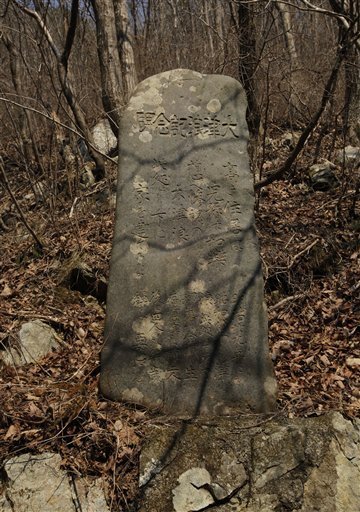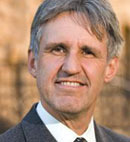Stewart Brand's Blog, page 104
April 18, 2011
Long Now Media Update

LISTEN
(downloads tab)
Ian Morris's "Why the West Rules – For Now"
There is new media available from our monthly series, the Seminars About Long-term Thinking. Stewart Brand's summaries and audio downloads or podcasts of the talks are free to the public; Long Now members can view HD video of the Seminars and comment on them.







April 15, 2011
Ian Morris, "Why the West Rules – For Now"
Geographical determinism
A Summary by Stewart Brand
Historians and others who try to explain the world dominance by the West since the 18th century usually put it down to long-term lock-in or short-term accidents, said Morris. The lock-in theories are belied by the dominance of the East from 550 to 1750 CE. The accidents approach is undermined by clear patterns that emerge when you look for them in a rigorous way.
Morris has devised a quantitative "social development index" based on evaluating a civilization's energy capture, organization (size of largest cities), information management, and war-making capability. (The details of his method are online here.) When you graph human progress since the last ice age 15,000 years ago, the results show…
Read the rest of Stewart Brand's Summary here.







April 12, 2011
Long Now Media Update

WATCH
Matt Ridley's "Deep Optimism"
There is new media available from our monthly series, the Seminars About Long-term Thinking. Stewart Brand's summaries and audio downloads or podcasts of the talks are free to the public; Long Now members can view HD video of the Seminars and comment on them.







Monterey's First Mammoth
10,000 years ago what was walking on the land you are on right now? It turns out in a recent find that a mammoth was in Monterey county on the California coastline ten millennia ago. As is frequently the case, the bones were revealed while tilling agricultural land for the planting season. Mark Hylkema, Santa Cruz District archaeologist for the state Department of Parks, spoke with Kevin Howe of the Monterey County Herald about the find, which could indicate that more fossils might be buried in the area.
Hylkema described teeth, tusks and bones as still porous and in good condition
"There were three types of bone conditions noted," Hylkema reported. "Fragments of ivory tusk, regular looking bone fragments and some that were discolored as though charred or lithified."
If the bones are charred, he said, it could indicate human association with the remains. Some bone fragments were taken for radiometric tests to determine how old they are.
…The soil level and composition in which they were found indicates that the mammoth died 10,000 to 25,000 years ago, Hylkema said.
Another exciting collection of Ice Age fossils was uncovered last fall at the site of a popular ski resort in the Colorado Rockies. You can see some great photographs from that discovery on the National Geographic website.







April 8, 2011
Centuries-old Tsunami Warnings Carved in Stone

"High dwellings are the peace and harmony of our descendants," the stone slab reads. "Remember the calamity of the great tsunamis. Do not build any homes below this point."
Jay Alabaster of the AP reports that hundred of stone markers dot the coastlines of Japan. The oldest of these markers appears to be near 600 years old.
They carry warnings of tsunamis past and instruct readers to get to high ground after earthquakes. Some are even placed at high-water marks to indicate the extent of particular tsunami events.
The village of Aneyoshi grew up as a collection of homes built uphill of some of the markers specifically to be safe. Residents are raised knowing of the stones and their meaning.
"Everybody here knows about the markers. We studied them in school," said Yuto Kimura, 12, who guided a recent visitor to one near his home. "When the tsunami came, my mom got me from school and then the whole village climbed to higher ground."
There are those who can recall the 1960 tsunami caused by an earthquake in Chile, but the stone markers form a deeper cultural memory, representing many generations of life in a disaster-prone area and lessons learned from it. "Crude" though they may be, perhaps they provide a useful example for memorializing the recent disaster and for durably preserving its lessons for future generations.







April 7, 2011
Featuring: The Future
The second season of FUTURESTATES has been released, a film series featuring visions and stories of the "not-too-distant future." Participants imagined narratives based on scenarios such as extreme climate change with environmental refugees, gated communities that regulate the genetic makeup of their offspring, and the proliferation of software that charts our likes and dislikes, "creeping into the human heart and soul." J.P. Chan's "Digital Antiquities" tells the tale of a man with a cryptic old device (a CD) that his mother left him and the woman who helps him retrieve its data. The story takes place in a time when all information is constantly uploaded to 'the cloud,' rendering nearly all of our present media obsolete. Interestingly, this time is fast approaching: the year is 2036. Chan writes:
My own experience with data loss made me think about how easy it is to lose digital memories and what it might mean for our culture — and ourselves — when that loss happens billions of times over. What memories will be preserved of our era, when the media itself is so fragile? Stone tablets survive millenia to tell us stories of civilizations that left few other traces. If the far-more-frail hard drive is the stone tablet of our times, we're in big trouble.
In the future, virtually all of our lives will be recorded and presumably stored safely online somewhere. Recovering data from personal media like floppy disks, hard drives, optical discs, and memory chips will be an extinct business. But right now, we're creating lots of digital memories on these media but only haphazardly preserving them. How will we feel about this in a few decades when much of it is gone?
You can watch "Digital Antiquities" here, and also check out FUTURESTATES' Predict-o-Meter where you can weigh in on the future and see other users' predictions.







April 4, 2011
Tim Flannery Ticket Info
Seminars About Long-term Thinking

Tim Flannery presents "Here on Earth"
TICKETS
Tuesday May 3, 02011 at 7:30pm Marines' Memorial Theater at Union Square
Long Now Members can reserve 2 seats, join today! • General Tickets $10
About this Seminar:
Humans now engage the Earth at Gaian scale. How did Earth and humans get to this state? Given how we got here, how should we proceed? Tim Flannery finds that the evolutionary perspective of Alfred Russell Wallace offers better guidance than the more familiar Darwinian version of evolution.
Australian biologist Tim Flannery is the renowned author of The Weather Makers, The Future Eaters, and a great ecological history of North America, The Eternal Frontier. His current book is Here on Earth: A New Beginning.
Twitter - up to the minute info on tickets and events
Long Now Blog – daily updates on events and ideas
Facebook – stay in touch through our fan page
Long Now Meetups - join one or start your own







March 30, 2011
New Scientist Plays Benevolent Dictator
New Scientist recently got in touch with a series of experts to discuss a thought experiment they call Civilization 2.0 – If we had the chance to redesign civilization from the ground up, with all our current knowledge (and the agreement of everyone in the world), how would we do it?
Suppose we could try again. Imagine that Civilisation 1.0 evaporated tomorrow, leaving us with unlimited manpower, a willing populace and – most important – all the knowledge we've accumulated about what works, what doesn't, and how we might avoid the errors we got locked into last time. If you had the chance to build Civilisation 2.0 from scratch, what would you do differently?
They spoke with Geoffrey West (a future SALT speaker) about appropriate size and scale of cities, noting that there seem to be some very predictable patterns to the way life in cities changes as they grow. Apparently many things increase at a steady 15% with each doubling in population of city: energy and resource efficiency, income, wealth, colleges, but also crime, disease and even average walking speed.
In talking to Christopher Flavin and Mark Delucchi, they come to the conclusion that denser, transit-oriented cities (rather than sprawling suburbs) will be important. A combination of top-down planning would establish hubs near fresh water and other useful resources, link them into a large-scale transit system, and then hand over the local design and details to residents. Carlo Ratti is particularly keen on this local-scale wiki-style planning and hopes that in Civilization 2.0, residents will have much more knowledge and influence, thanks to technology, over the planning decisions immediately affecting them.
This local/distributed paradigm also informs their approach to energy – Lena Hansen encourages a locally-producing renewable system for the sake of resilience and efficiency. Then they zoom out a little more and discuss ways that the cost of producing energy could be factored more realistically into the costs of materials and goods and ways that environmental quality and human happiness could better be accounted for in measures of economic well-being.
For governing our new, enlightened civilization, two sides are explored. The first perspective comes from sociologist Robin Dunbar, whose research has shown the upper cognitive limits of the human mind to know and recognize other people. Each person, he's found, can only recall personal information and maintain a relationship with about 150 other people. Groups adhering to this limit can generally be governed through personal relationships rather than hierarchy and bureaucracy.
Paul Raskin takes a different approach: he proposes a newspaper published once per decade and suggests that the most recent edition's headline would have to be about what he calls the 'planetary phase' of history. He hints at what some have called the 'anthropocene,' a geological epoch in which humanity is the major force in earth's biosphere. Such broad, global effects, he explains, require broad, global control – not necessarily a single world government, but certain goals and values set and enforced on a planetary scale.
In the end, the article also explains that too specific or rigid a design opens civilization up to catastrophe in the face of climatic and ecological change. Historically, we've seen societies that run very efficiently in their given environment unable to adapt to changes to that environment and so some flexibility at the cost of efficiency will likely be, in the long-run, worth it.
The full article on New Scientist is available for the next week (if you are willing to go through the free registration), after which it will require a paying subscription. Above, you can find links to information on many of the experts they spoke with as well as the points each contributed to the scenario. Happy planning!







March 28, 2011
Thinking Ahead… While We Sleep
A study was published last month that made some interesting conclusions about how the human brain organizes and prioritizes memory. Psychology Today reported on the investigation, which was conducted by a team of researchers under the leadership of University of Lübeck professor Dr. Jan Born. The experiment involved volunteers conducting one of a few memory tests and then being quizzed ten hours later on the tests. Only some of the participants, however, were told that they would be quizzed, and only some of them were allowed to sleep in the meantime. As it happens, we might all be futurists while we're asleep…
The pivotal question is, How does the brain "decide" what to keep and what to dump?… German researchers have garnered evidence that the brain sorts through memories during sleep and preferentially retains the ones that are most relevant. The study, published in the Journal of Neuroscience, concludes that the brain evaluates information based on future expectations. After a good night's sleep, we remember information better when we know it will be useful in the future.
…The researchers also recorded electroencephalograms (EEGs) from the individuals who slept. Subjects who expected a test displayed a strong increase in slow oscillation activity during their slow-wave sleep. The more slow-wave activity the sleeping participants had, the better their memory during the test. Born and colleagues think that the process may involve at least two parts of the brain. The brain's prefrontal cortex appears to "tag" memories deemed potentially useful for the future, while the hippocampus consolidates those memories during sleep.
"Our results show that memory consolidation during sleep indeed involves a basic selection process that determines which of the many pieces of the day's information are sent to long-term storage," Born says. "Our findings also indicate that information relevant for future demands is selected foremost for storage."







March 25, 2011
Ian Morris Ticket Info
The Long Now Foundation's monthly
Seminars About Long-term Thinking

Ian Morris on "Why the West Rules – For Now"
TICKETS
Wednesday April 13, 02011
at 7:30pm Marines' Memorial Theater at Union Square
Long Now Members can reserve 2 seats, join today! • General Tickets $10
About this Seminar:
Historian and archaeologist, Ian Morris' most recent book, Why the West Rules – For Now, discusses reasons for changes in global dominance, cultural and geographic differences between civilizations, and the eroding usefulness of the East/West distinction.
Morris has studied at Cambridge, the University of Chicago, and most recently Stanford. He founded the Stanford Archaeology Center in 02000 and oversaw excavations for 6 years at Monte Polizzo, Sicily.
Twitter - up to the minute info on tickets and events
Long Now Blog – daily updates on events and ideas
Facebook – stay in touch through our fan page
Long Now Meetups - join one or start your own







Stewart Brand's Blog
- Stewart Brand's profile
- 291 followers







